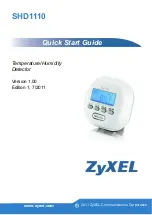
C H A P T E R
5
Transparent CFM
CFM support on a customer VLAN (C-VLAN) allows a customer to provision maintenance intermediate
points (MIPs) and Up maintenance endpoints (MEPs) on a C-VLAN component for EFP (Q-in-Q interfaces
with dot1q or dot1ad C-UNI). MIPs and Up MEPs provide a customer with visibility to network traffic on
the C-VLAN. CFM support on a C-VLAN also provides a common point for service verification and
standardizes the user-network interface (UNI).
Transparent CFM is a mechanism to provide transparency on CFM frames between customer ends.
Transparency helps the service provider network to pass the entire maintenance levels (0-7) of CFM frames
from one customer end to another customer end by UP MEP that is configured on UNI-N port at any level.
•
Information About Transparent CFM, page 65
Information About Transparent CFM
This section provides the information about transparent CFM.
EFP (Q-in-Q interfaces with dot1q or dot1ad C-UNI)
A EFP (Q-in-Q interfaces with dot1q or dot1ad C-UNI) represents a demarcation point between a C-VLAN
space and an S-VLAN space. For purposes of CFM protocol processing, a dot1q-tunnel port is modeled as
having two components: a C-VLAN component and an S- VLAN component. The C-VLAN component
processes double-tagged packets from the relay-function and single-tagged packets from the wire. The S-VLAN
component processes single-tagged packets from the relay-function and generates single tagged packets on
relay.
CFM traffic belonging to each of the C-VLAN and S-VLAN components can be distinguished based on
Ethernet layer encapsulation. This distinction allows each of the components to use the entire maintenance
level range (0 to 7) without violating the maintenance domain hierarchy.
The CFM traffic generated by the C-VLAN component is transparent to the S-VLAN component if the
maintenance levels of the C- VLAN component are lower than those of the S-VLAN component. The Ethernet
encapsulation should be used in combination with the CFM maintenance level to determine which maintenance
domain a particular traffic flow belongs to.
Carrier Ethernet Configuration Guide (Cisco ASR 920 Series)
65
















































